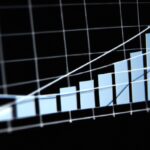The Gini coefficient measures income distribution, critical for understanding inequality. Governments assess wealth distribution to inform policy decisions. It quantifies disparities in salary distribution and illuminates societal divides. Economists, researchers, and policymakers apply it across diverse fields, from income inequality to education access. Gini coefficient data helps identify vulnerable demographics and shape social welfare programs. By analyzing income disparities, Gini coefficient highlights economic injustices and influences social policies. Its applications extend to health outcomes, poverty reduction, and resource allocation strategies. Understanding the Gini coefficient’s significance supports efforts to promote equitable societies and foster social cohesion. It provides a vital tool for assessing and addressing disparities, advancing social justice efforts.
Table of Contents
- Applications of Gini coefficient in economics
- Calculation of Gini coefficient
- Criticisms of Gini coefficient
- Definition of Gini coefficient
- Interpretation of Gini coefficient
(Understanding the Gini Coefficient)
The Gini coefficient measures income distribution within a society. It ranges from 0 to 1, with 0 representing perfect equality and 1 indicating extreme inequality. Governments and organizations use this metric to assess income disparities and devise policies to address them. In economics, the coefficient helps in analyzing poverty levels and evaluating the effectiveness of social welfare programs. It is also valuable in comparing living standards between different countries. Social scientists utilize the Gini coefficient to study social mobility and its correlation with income inequality. Moreover, businesses can use this metric to understand consumer purchasing power and market potentials. Additionally, the coefficient is crucial for policymakers in designing tax systems and social programs to promote economic inclusivity. Understanding the Gini coefficient is key to creating a fairer society with equal opportunities for all. By examining income inequality through this lens, stakeholders can work towards a more equitable future for everyone. As awareness of this metric grows, its application in various fields continues to expand, making it an essential tool for promoting social justice and sustainable development worldwide.
Applications of Gini coefficient in economics
The Gini coefficient, a measure of income distribution within a population, finds its application in various economic analyses. In economics, the Gini coefficient serves as a crucial tool to assess income inequality levels within societies. Its wide utility lies in understanding how wealth is distributed among individuals or households.
One significant application of the Gini coefficient in economics is evaluating poverty levels across different regions or countries. By calculating the Gini index for various areas, policymakers can identify disparities and target interventions more effectively. The higher the Gini coefficient value, the greater the level of income inequality present in that specific area.
Furthermore, economists often use the Gini coefficient to study social welfare programs’ effectiveness. Governments can track changes in income distribution over time by analyzing shifts in the Gini index before and after implementing such policies. This information helps measure how successful these initiatives are at reducing poverty and promoting equal opportunities for all citizens.
In addition to domestic applications, international comparisons also benefit from using the Gini coefficient. When comparing income distributions between countries, economists can gain insights into global inequalities and develop strategies to address them collaboratively on a larger scale. Understanding these variations facilitates discussions on trade agreements, foreign aid allocation, and other cross-border economic policies.
Moreover, businesses utilize the Gini coefficient to analyze market trends and consumer behavior patterns based on income segments. Companies can tailor their marketing strategies according to different socio-economic groups identified through this method while ensuring their products reach diverse demographics efficiently.
Overall, whether it’s assessing national welfare programs’ impact or guiding business decisions for targeted marketing campaigns—the versatility of the Gini coefficient makes it an invaluable tool in economic research and policy-making efforts worldwide.
Calculation of Gini coefficient
Calculating the Gini coefficient is like peeling back the layers of income inequality to reveal a society’s economic disparities. This statistical measure, ranging from 0 (perfect equality) to 1 (maximum inequality), provides profound insights into wealth distribution. To compute this index, one first needs data on individual incomes or wealth within a population.
Imagine you have a list of everyone’s earnings in a city – from street vendors scraping by to CEOs swimming in riches. The next step involves sorting these individuals based on their income levels, starting with the lowest earner and ending with the highest paid person. Once this ranking is complete, plot them against cumulative percentages of total income.
Now comes the crucial part: drawing what economists call the “Lorenz curve.” Picture a graph where you map out how much of the total income each percentile group holds. Often resembling an upward-sloping line away from perfect equality, this curve visually depicts concentration or spread of wealth.
To calculate the Gini coefficient precisely, consider shading two regions under this Lorenz curve: one representing actual income distribution and another indicating perfect equality scenario (a diagonal line). Now compare these areas’ ratios – voilà! You’ve got yourself an approximated Gini coefficient value that quantifies societal imbalance levels.
This process isn’t merely about crunching numbers; it’s about grasping real-world implications. As you delve into calculations and witness that stark number emerge – say 0.45 – imagine what it signifies for people’s lives around you. A high figure might indicate severe gaps between haves and have-nots, while lower values suggest more equitable resource sharing.
Applying such computations can fuel policy changes aimed at leveling financial playing fields or pinpointing vulnerable groups needing assistance most urgently. It empowers decision-makers to tailor interventions effectively towards reducing poverty or improving social welfare programs tailored to those left behind in our unequal landscape.
In essence, understanding how to derive and interpret Gini coefficients isn’t just about math; it’s delving deep into human stories painted by economic figures – tales of struggle, privilege disparity, and potential paths towards building fairer societies where opportunity truly thrives for all.
Criticisms of Gini coefficient
When we delve into the realm of income inequality measurement, one popular metric that often takes center stage is the Gini coefficient. This statistical tool, named after Italian statistician Corrado Gini, provides a numerical representation of economic inequality within a specific population. However, despite its widespread use and acceptance, the Gini coefficient is not without its fair share of criticisms.
One key critique leveled against the Gini coefficient is its reliance on aggregate measures. By focusing solely on overall income distribution patterns within a population, this metric tends to overlook important nuances at play. It fails to capture variations in wealth disparities among different demographic groups or regions within a country. As a result, policymakers may struggle to formulate targeted interventions aimed at addressing specific pockets of inequality.
Furthermore, detractors argue that the Gini coefficient’s emphasis on relative rather than absolute differences can sometimes paint an incomplete picture. For instance, two societies with identical Gini coefficients could exhibit vastly different living standards for their respective populations. In such cases, relying solely on this metric might lead to misguided policy decisions that fail to uplift those most in need.
Another common criticism pertains to the limited scope of factors considered by the Gini coefficient. Critics contend that this measure predominantly focuses on income distribution while neglecting other crucial determinants of well-being such as access to healthcare, education opportunities, and social mobility. As a result, using the Gini coefficient in isolation may oversimplify complex socio-economic realities and hinder comprehensive efforts towards fostering inclusive growth.
Moreover, some scholars question the underlying assumptions of homogeneity embedded within the calculation of the Gini coefficient. By treating all individuals within a population as equally interchangeable units without accounting for individual circumstances or structural barriers they face—such as discrimination or historical injustices—the accuracy and relevance of this metric come under scrutiny.
In essence; while valuable in providing a broad overview of income inequality trends across populations—the simplicity inherent in calculating it makes it prone to oversights when crafting effective policies tailored towards mitigating disparities deeply rooted in society requires supplemental tools beyond just what raw numbers convey!
(Gini Coefficient | International Business | From A Business Professor)
Definition of Gini coefficient
The Gini coefficient, a measure developed by Italian statistician Corrado Gini in 1912, is a numerical representation of income or wealth distribution within a population. It quantifies the level of inequality present in society, ranging from 0 (perfect equality) to 1 (maximum inequality). Picture a village where some live lavishly in grand homes while others struggle day by day just to put food on the table. The Gini coefficient offers us a way to capture this stark contrast and reflect it through numbers.
When you see that number creep closer to 1 on the scale, it signifies greater disparity among individuals’ economic standings. This indicator serves as a mirror reflecting back at us how resources are shared – or not shared – across different segments of society. Think about your own community; who holds the bulk of wealth, and who barely scrapes by? These questions lie at the core of what the Gini coefficient seeks to unveil.
By calculating this index for various regions or countries, policymakers gain valuable insights into societal well-being and can formulate targeted interventions based on these findings. Imagine officials poring over data points, attempting to decipher which communities need additional support and where opportunities for growth exist. The Gini coefficient acts as their guidepost through these complex landscapes.
Furthermore, economists use this metric when analyzing trends over time within an economy. As values fluctuate year after year, patterns emerge that shed light on whether wealth gaps are widening or narrowing. An uptick in the Gini coefficient may signify troubling developments such as heightened poverty rates or unequal access to education and healthcare services.
On an emotional level, contemplate how it feels when you learn that many families struggle with basic needs while only a select few amass unimaginable riches. That sense of injustice fuels discussions around policy changes aimed at fostering more equitable societies where everyone has a fair shot at prosperity.
In essence, the Gini coefficient transcends mere numbers; it encapsulates stories of privilege and hardship woven into our social fabric. Its significance lies not just in mathematical calculations but in its power to advocate for those marginalized by inequity’s grasp. So next time you encounter this enigmatic figure amidst economic discussions, remember its profound narrative weaving together lives shaped by disparities both glaring and subtle alike.
Interpretation of Gini coefficient
Understanding the interpretation of the Gini coefficient provides valuable insights into income distribution within a population. The Gini coefficient, ranging from 0 to 1, measures inequality, where 0 represents perfect equality (everyone has the same income) and 1 indicates maximum inequality (one person has all the income). This statistical tool reveals how wealth or income is spread out among individuals in a specific area over time.
When analyzing a society’s economic makeup through the lens of the Gini coefficient, it uncovers whether resources are evenly dispersed or concentrated in fewer hands. For instance, if a country’s Gini coefficient increases over time, it signifies a widening gap between rich and poor segments of society. On the contrary, when there is a decrease in its value, it suggests efforts towards greater equality in income distribution.
The emotional impact of interpreting the Gini coefficient can be profound. A high Gini value can evoke feelings of injustice and inequity as it highlights disparities between socioeconomic groups. Imagine looking at data that shows a steep curve nearing one on the Gini scale – this could stir up emotions like anger or frustration at such stark inequalities existing within communities.
Conversely, witnessing a lower Gini score might spark hope and optimism regarding more equitable opportunities for all members of society. Picture seeing graphs trending closer to zero; this visual representation could elicit feelings of satisfaction and progress towards achieving fairer wealth distribution.
Moreover, interpreting changes in the Gini coefficient over time allows policymakers to assess the effectiveness of social programs aimed at reducing poverty and enhancing economic mobility. If interventions lead to a decline in the Gini index, it serves as validation that policies are making positive strides toward creating an inclusive society where everyone has access to resources for well-being.
In essence, delving into what lies beyond mere numbers when examining the implications of variations in the GIni coefficent invites us to reflect on our values as a society: fairness vs disparity; solidarity vs individualism; inclusion vs exclusion – these contrasting ideals play out vividly through statistics but resonate deeply with human experiences shaping our collective narrative around justice and equity.
External Links
- Two more ways of spelling Gini Coefficient with Applications
- A comparison of random forest and its Gini importance with standard …
- Measuring Statistical Dispersion with the Gini Coefficient
- Applications of the Gini Index Beyond Economics and Statistics …
- Beyond economic metrics: The Gini index in the big data age






